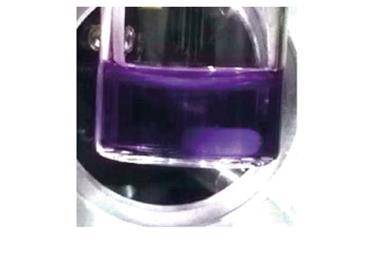A piperidine-based oscillator has been made that can catalyse an independent reaction periodically without losing its oscillating properties.1 The discovery could be used to construct complex networks of reactions that would otherwise interfere with one another, opening new opportunities in chemical synthesis.
‘Catalysis and oscillations are two essential processes occurring in living cells,’ says Syuzanna Harutyunyan at the University of Groningen in the Netherlands who led the study. ‘We have successfully coupled these two processes for the first time in a synthetic system to build a catalytically active oscillator.’ Although oscillating reactions are common in many important biological processes, including cell division and heartbeat regulation, the development of synthetic oscillators with additional functions has remained a challenge.
‘Examples where one of the oscillating species is an organocatalyst didn’t exist,’ notes Harutyunyan. She explains that the main problem with introducing a secondary function into an oscillator is that the components of the oscillator must participate in the new function without compromising its role as a timekeeper. ‘We reasoned that if the secondary function is catalysis, this should be possible because the oscillator component is involved in the secondary function transiently.’
The team designed a modular system composed of simple and easily tuneable reactions and realised the arrangement through mechanistic analysis, kinetic studies and computer simulations. ‘Joining forces with the group of Wilhelm Huck was essential to quickly find the oscillatory conditions for our system,’ says Harutyunyan.
‘Our oscillator is based on autocatalytic 9-fluorenylmethoxycarbonyl (Fmoc) deprotection and acetylation reactions,’ adds Matthijs ter Harmsel, who constructed the catalytic oscillator. ‘By placing these reactions in a flow and tuning the conditions, we can make the system oscillate.’
Irving Epstein from Brandeis University in the US, who wasn’t involved in the study, explains that in the new oscillator, piperidine acts as a catalyst for several reactions. ‘The researchers show that when the substrates of a reaction catalysed by piperidine are introduced into their system, products are generated in an oscillatory fashion, and the features of the oscillation – period and amplitude – are only slightly perturbed,’ he says.
The scientists monitored the concentrations of the oscillator components using in situ IR spectroscopy and observed that the catalyst was only available in bursts roughly every two hours depending on the concentration of the piperidine. ‘We realised that we could use that to obtain selectivity in a mixture of reactants,’ notes ter Harmsel. To test this, the team carried out experiments using two different substrates for the Knoevenagel condensation – a modification of the aldol reaction – and found that only the more reactive substrate was converted during the concentration peaks of the catalysts.
‘The catalytically active oscillator promotes time-synchronised chemical reactions, improving product purity by suppressing slow competing reactions as products form and stopping degradation reactions after high levels of the desired product appear,’ comments Alexander Scheeline from the University of Illinois at Urbana-Champaign in the US. ‘There has been interest in using oscillating reactions for improved chemical synthesis for some time, but this work is – to my knowledge – the first where useful improvements were actually achieved,’ he adds.
Sergey Semenov at the Weizmann Institute of Science in Israel points out that the new findings demonstrate that the principles for designing oscillators using two inhibitors that were outlined by him and his colleagues in 2016 for the chemistry of thiols2 can be applied to other chemistries. ‘Now, oscillations have been coupled to organocatalytic reactions,’ he says. ‘An exciting new step could be the coupling of oscillations to transition-metal catalysed reactions.’
Harutyunyan believes that the modular approach could also be used to make other amine-based oscillators. ‘Provided the amines are basic enough to perform autocatalytic deprotection of their Fmoc-protected counterparts,’ she notes. ‘Using the general design principles presented in our work, it should be possible, in theory, to take any known catalyst and build an oscillator around it.’ But the limiting factor is that you need an autocatalytic reaction, she adds. ‘If we want to go beyond catalytic oscillators operating through a base/amine/enamine mechanism, we first have to develop new autocatalytic reactions.’
References
1. M ter Harmsel et al, Nature, 2023, 621, 87 (DOI: 10.1038/s41586-023-06310-2)
2. SN Semenov et al, Nature, 2016, 537, 656 (DOI: 10.1038/nature19776)












No comments yet